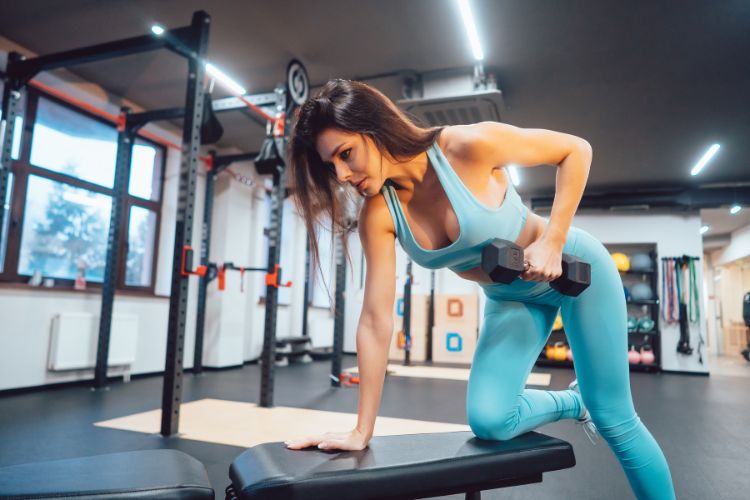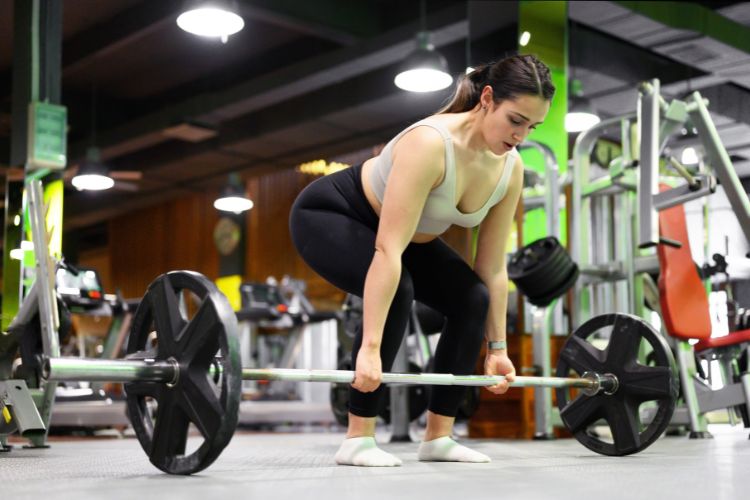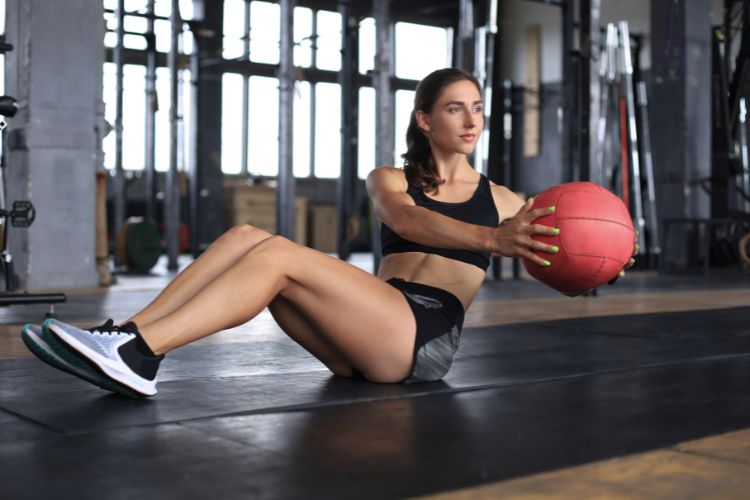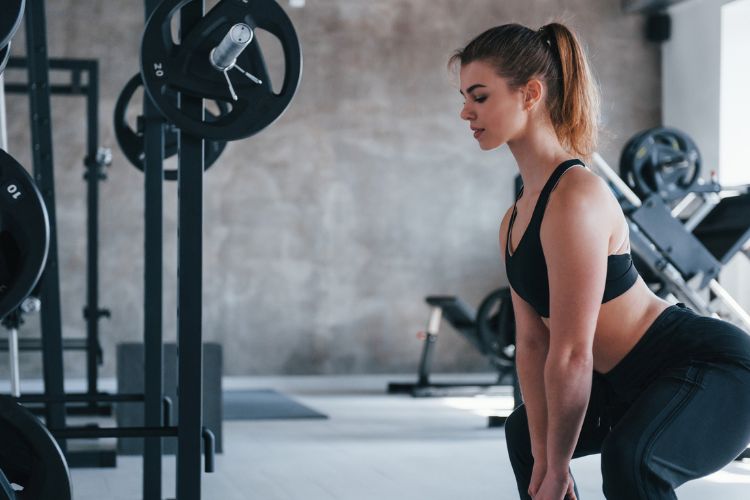Sign up for workout ideas, training advice, reviews of the latest gear and more.






For many women, the idea of stepping into a gym filled with daunting machines and heavy weights can be overwhelming. But what if we told you there’s a way to get strong, lean, and fit without even touching a single piece of gym equipment? Enter bodyweight strength training – a powerful, versatile, and often overlooked approach to fitness, tailored just for you.
Bodyweight strength training, as the name suggests, is about using your own body weight as resistance. Think push-ups, squats, lunges, and plank. Not only is it cost-effective and convenient, but it’s also incredibly effective for building strength, flexibility, and endurance.
It’s Convenient: No equipment means you can do it anywhere – at home, in a park, or even in your hotel room while traveling.
It’s Empowering: Using your own body weight to train can give you a sense of achievement and empowerment. Every time you do a push-up or hold a plank for a few seconds longer, you’re proving to yourself just how strong you are.
Customizable for All Levels: Whether you’re a beginner or an advanced trainee, bodyweight exercises can be modified to meet your current fitness level.
Holistic Development: Many bodyweight exercises are compound movements, meaning they work multiple muscle groups simultaneously. This provides a more functional strength and promotes lean muscle growth.
Start Slow: If you’re new to bodyweight exercises, start with the basics. Focus on mastering your form to prevent injuries.
Consistency is Key: Aim for at least 3 times a week. As you progress, you can increase the intensity and duration.
Include a Mix of Exercises: Ensure your routine incorporates a mix of strength, flexibility, and cardio exercises for a balanced workout.
Squats: Squats are great for the lower body, especially the thighs and glutes. Ensure your knees don’t go past your toes to maintain the right form.
Push-ups: A powerful upper body exercise. If standard push-ups are challenging, start with knee push-ups and gradually progress.
Lunges: Another lower body staple, lunges work on your thighs and glutes. You can do forward, reverse, or lateral lunges for variety.
Planks: An excellent core exercise. Start by holding for 20 seconds and gradually increase as you get stronger.
Burpees: A full-body workout that combines a squat, push-up, and a jump. It’s great for cardiovascular fitness and strength. (bodyweight strength training)
Glute Bridges: Specifically targets the glutes and helps in toning the posterior chain.
Stay Hydrated: Drink plenty of water before, during, and after your workout.
Warm-Up: A 5-10 minute warm-up of light cardio (like jumping jacks or brisk walking) can prepare your muscles and prevent injuries.
Stretch: After your workout, stretch your muscles to promote flexibility and reduce soreness.
Listen to Your Body: If an exercise feels painful (and not in the ‘good burn’ way), stop and reassess your form.
Stay Motivated: Set goals, track your progress, and celebrate your achievements. Having a workout buddy can also help in staying accountable.
The Power of Progressive Overload in Bodyweight Strength Training
While bodyweight strength training is inherently versatile and effective, many wonder how to continue progressing without adding weights. The answer lies in the principle of progressive overload, which involves increasing the intensity of exercises over time to continually challenge your muscles.
Increase Repetitions: One of the simplest ways to add intensity is by performing more repetitions of the same exercise.
Alter the Tempo: Changing the speed of your reps can make a significant difference. For instance, going slower can make the exercise more challenging by increasing the time your muscles are under tension.
Add Variations: Once standard push-ups become easy, try diamond push-ups or decline push-ups. With squats, progress to pistol squats or jump squats.
Use Interval Training: Incorporate high-intensity interval training (HIIT) with your bodyweight exercises. For example, 30 seconds of burpees followed by 30 seconds of rest, repeated several times, can be both a cardiovascular and muscular challenge.
While the physical benefits of bodyweight training are clear, there’s also a powerful mental component that deserves attention.
Mind-Muscle Connection: This refers to the conscious focus on the muscle being worked during an exercise. For instance, when doing a glute bridge, actively thinking about and feeling the glutes contract can improve muscle engagement and effectiveness of the workout.
Overcoming Plateaus: Like all forms of exercise, there will be times when progress seems to stall with bodyweight training. Rather than being disheartened, view plateaus as an opportunity. Delve deeper into your routine, focus on your form, or introduce new variations to push past these plateaus.
Meditative Movement: Many women find bodyweight exercises to be a form of moving meditation. The act of focusing intently on the body’s movements, the rhythm of the breath, and the contraction of muscles can be grounding and present similar benefits to mindfulness practices.
For any strength training regimen, nutrition plays an indispensable role. Your body requires adequate fuel to perform and recover.
Prioritize Protein: Protein aids in muscle repair and growth. Include sources like lean meats, dairy, legumes, and protein supplements in your diet.
Don’t Fear Carbohydrates: Carbs are your body’s primary energy source. Opt for complex carbs like whole grains, fruits, and vegetables which provide sustained energy.
Healthy Fats: Incorporate sources of omega-3 and omega-6 fatty acids, such as avocados, nuts, seeds, and olive oil, to support overall health.
Stay Hydrated: Beyond just water, ensure you’re replenishing lost electrolytes, especially after intense sessions.
Consider Supplements: Depending on your dietary preferences and needs, consider supplements like vitamin D, iron, or calcium. Always consult with a healthcare professional before starting any supplementation.
While bodyweight strength training can be a solitary endeavor, there’s a growing community of women who are embarking on similar journeys. Joining online forums, participating in challenges, or engaging in group classes (virtual or physical) can offer a sense of camaraderie, motivation, and shared learning.
Bodyweight strength training is more than just a series of exercises; it’s a holistic approach to fitness that encompasses physical strength, mental resilience, nutritional balance, and community spirit. As women, this method offers a path to empowerment, where every drop of sweat symbolizes a step towards a stronger, more confident self. So, whether you’re a novice starting with your first squat or an experienced athlete perfecting your handstand, know that with bodyweight training, the only limits are the ones you set for yourself. Embrace the journey, cherish the challenges, and always remember: strength comes from within.
Stay up to date on the latest women’s health, fitness and lifestyle trends and tips.